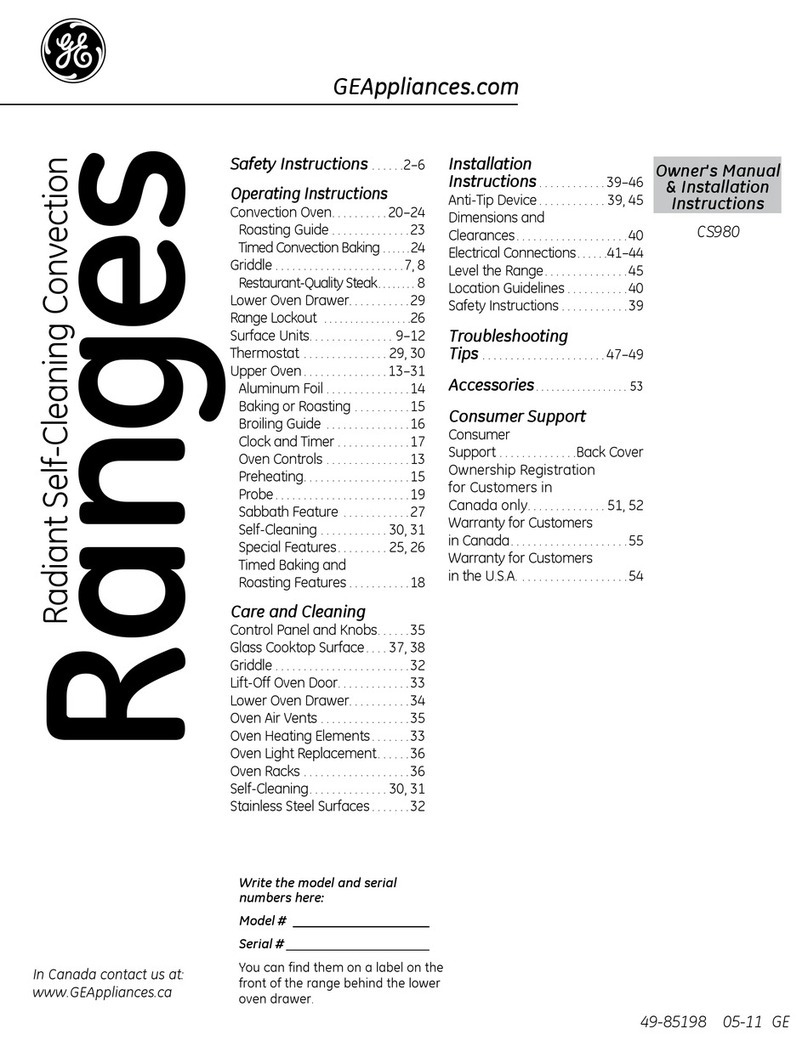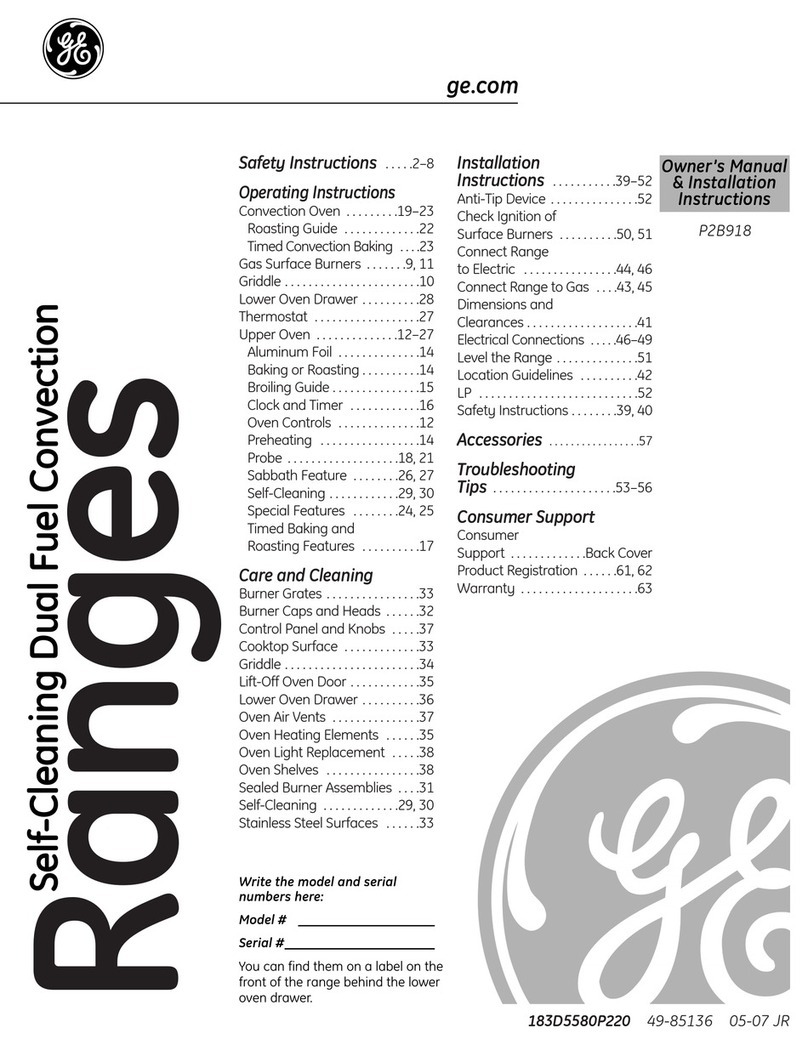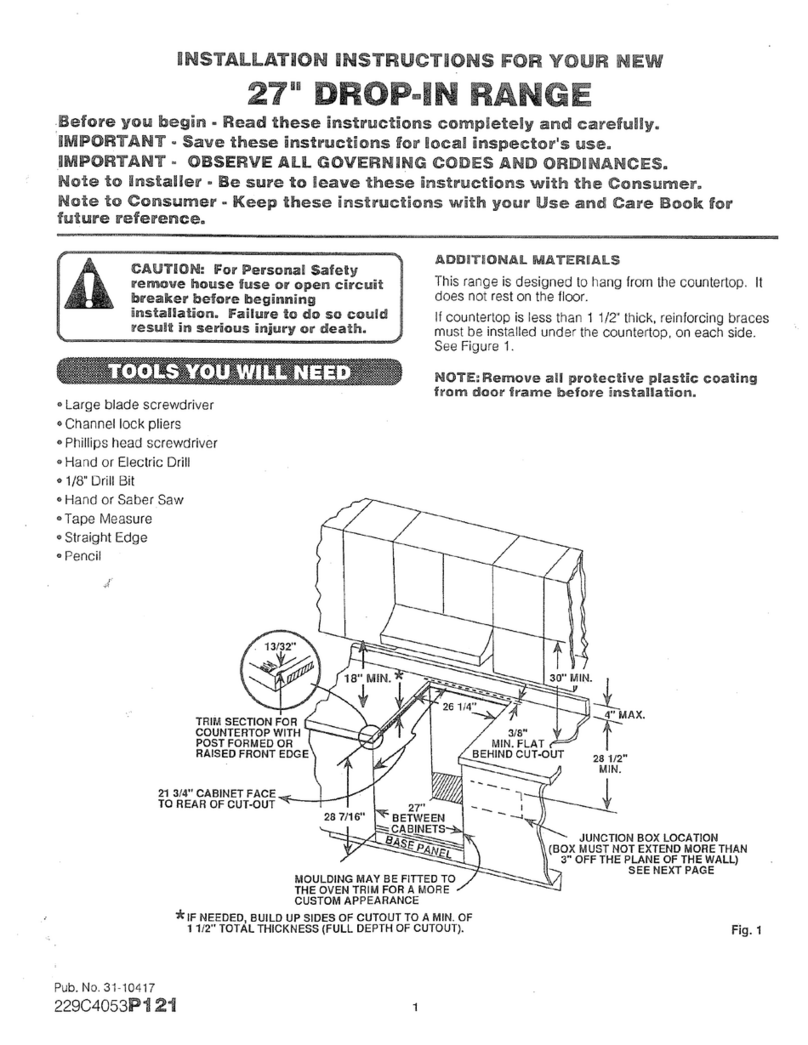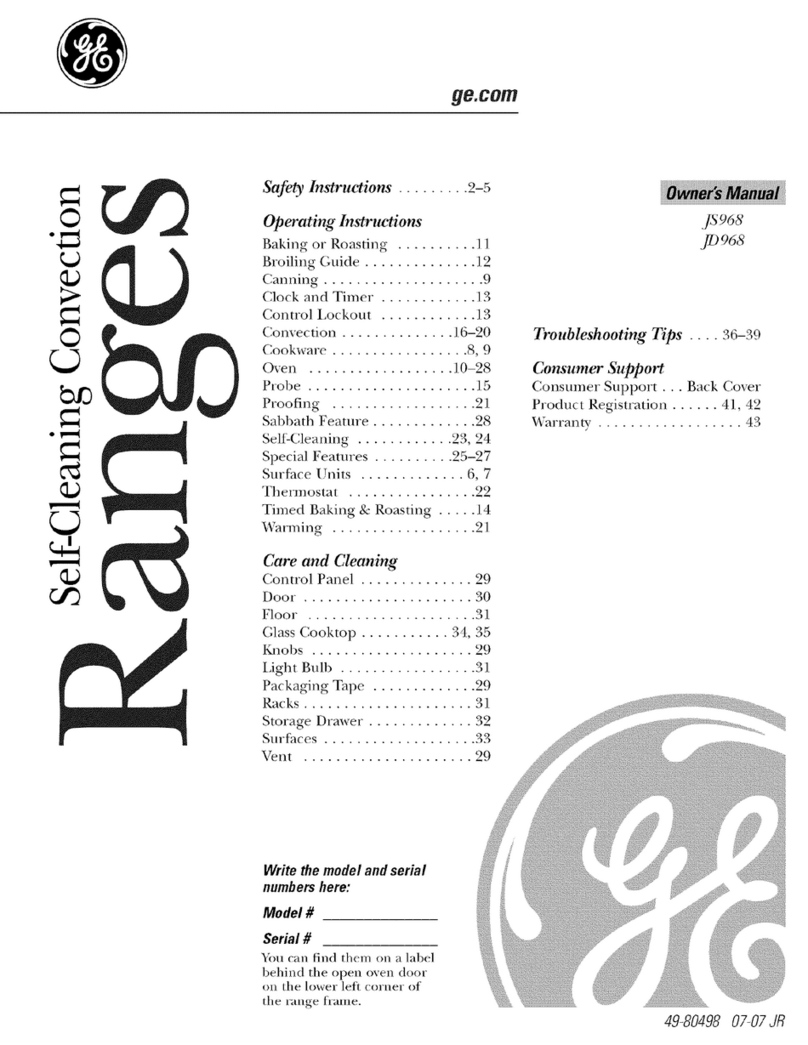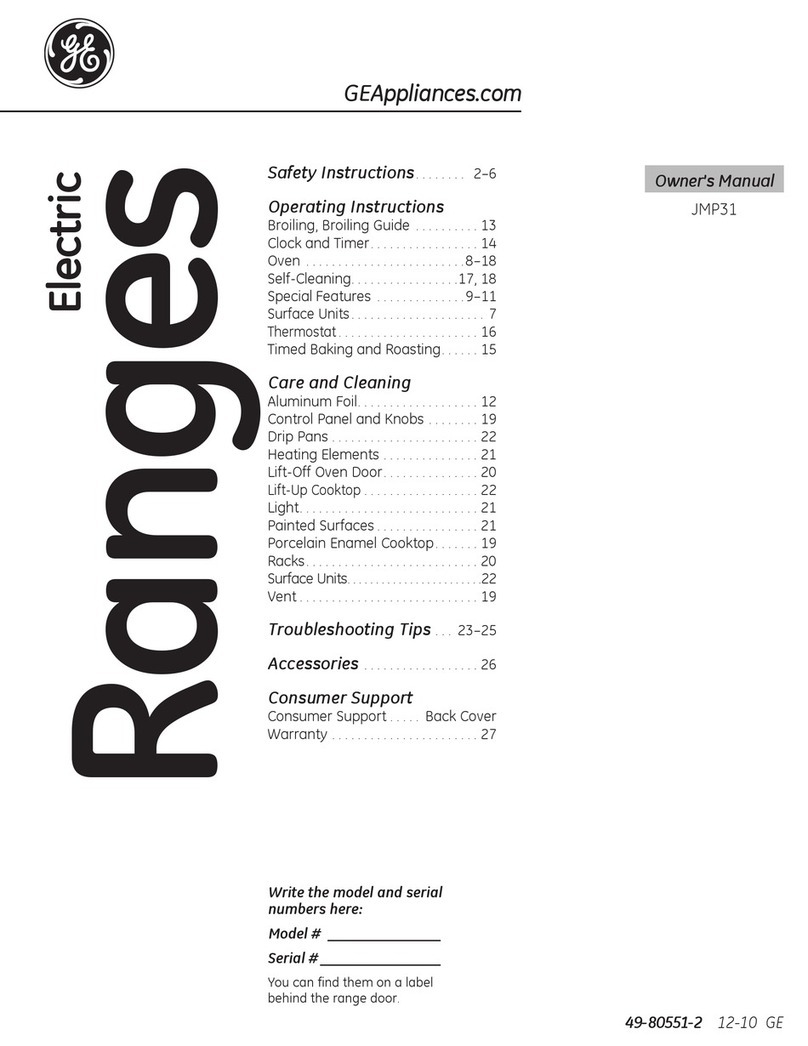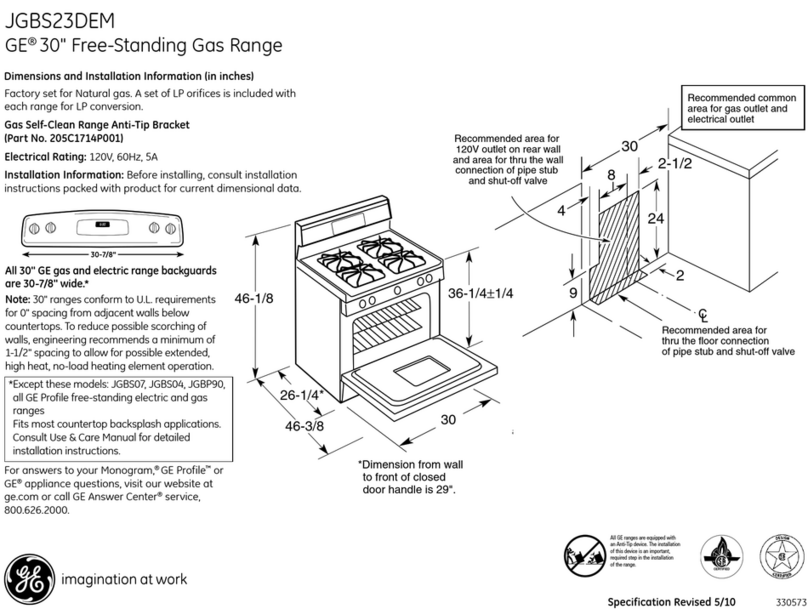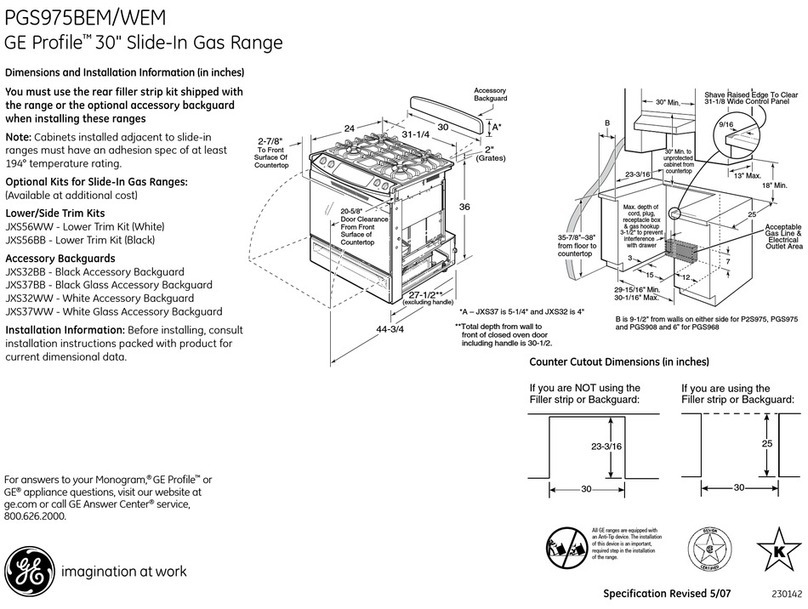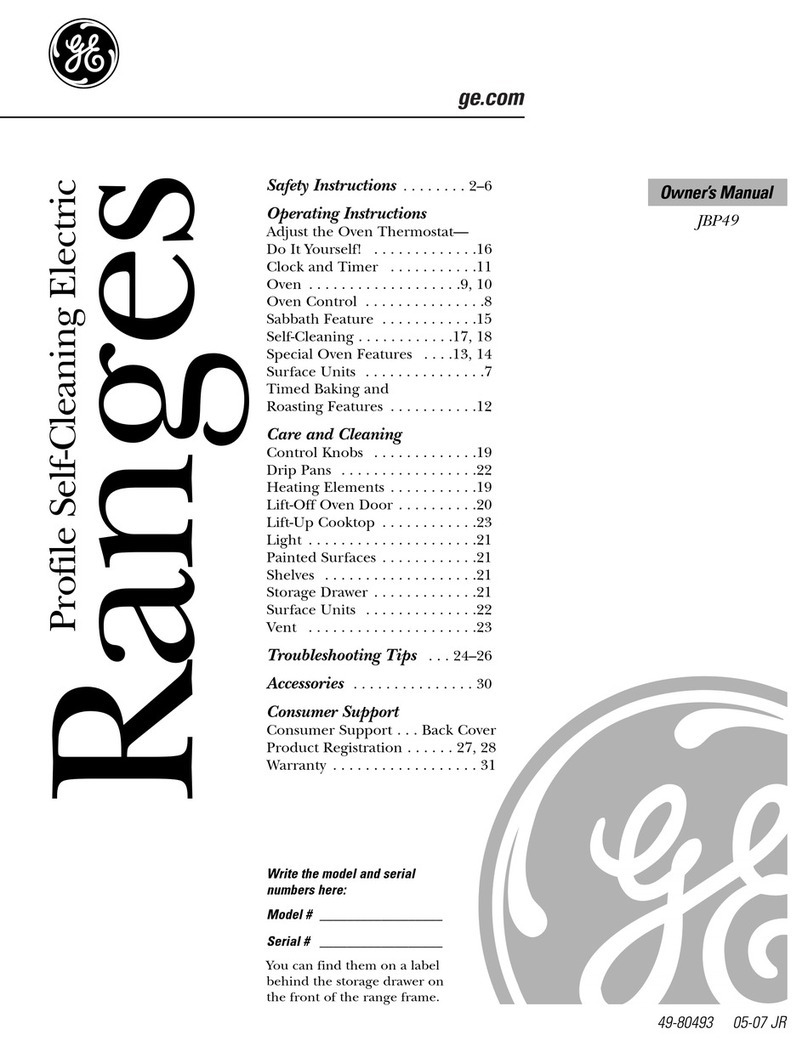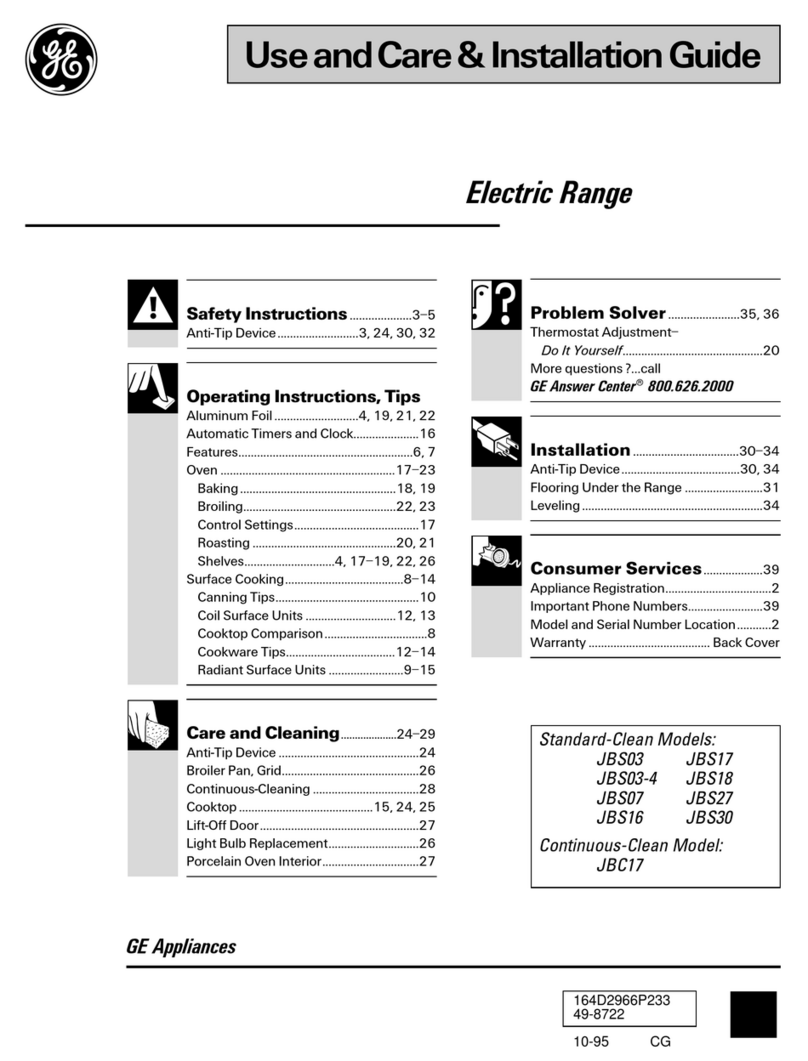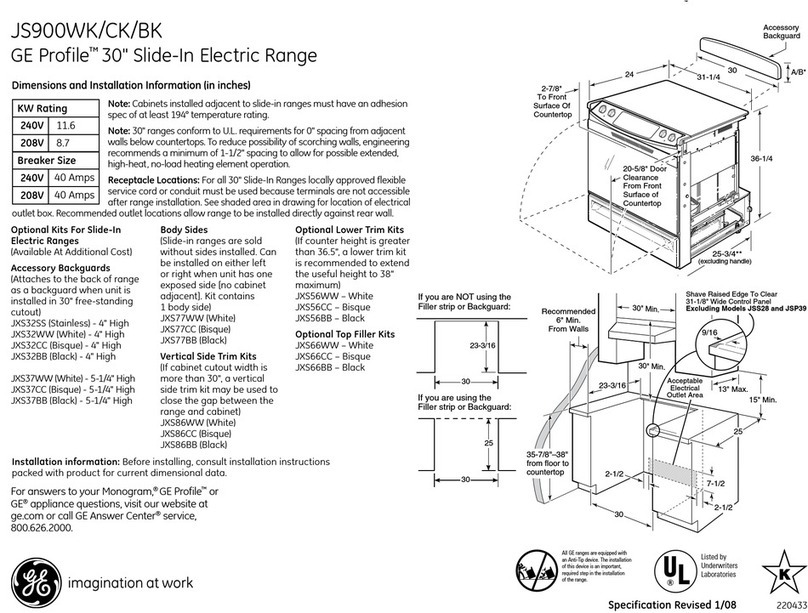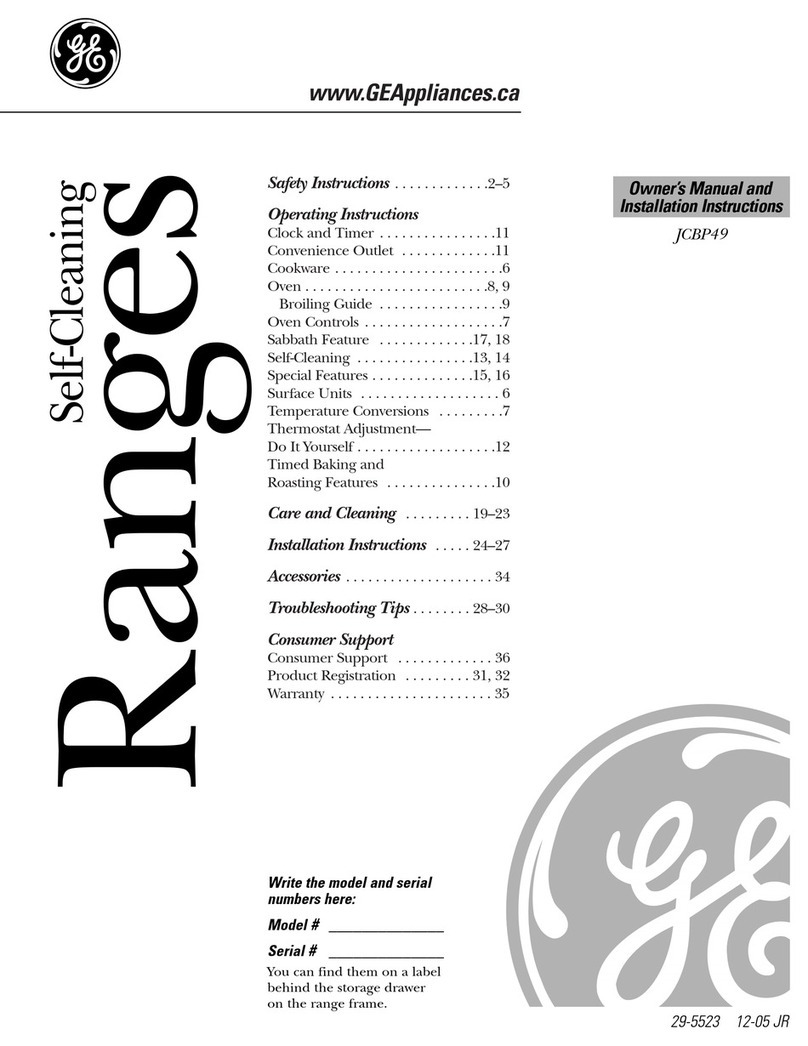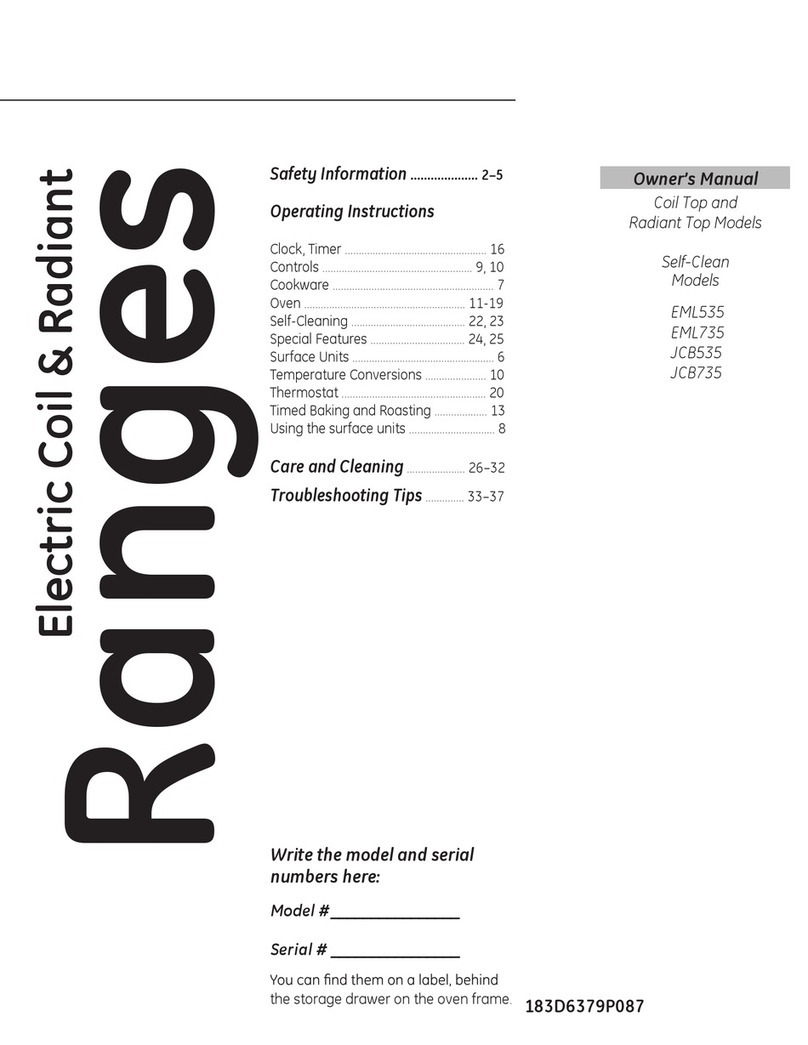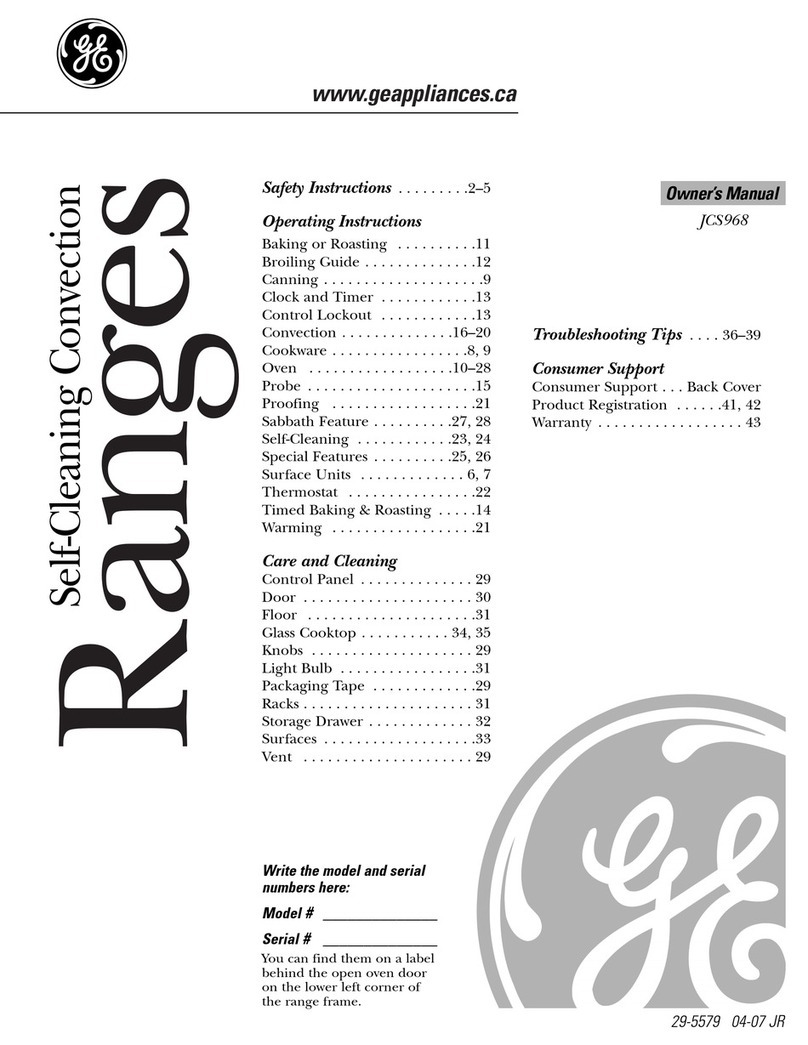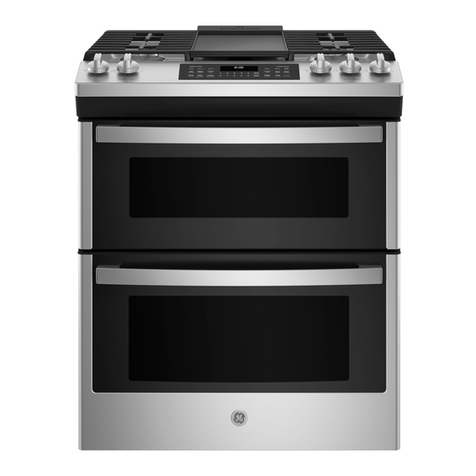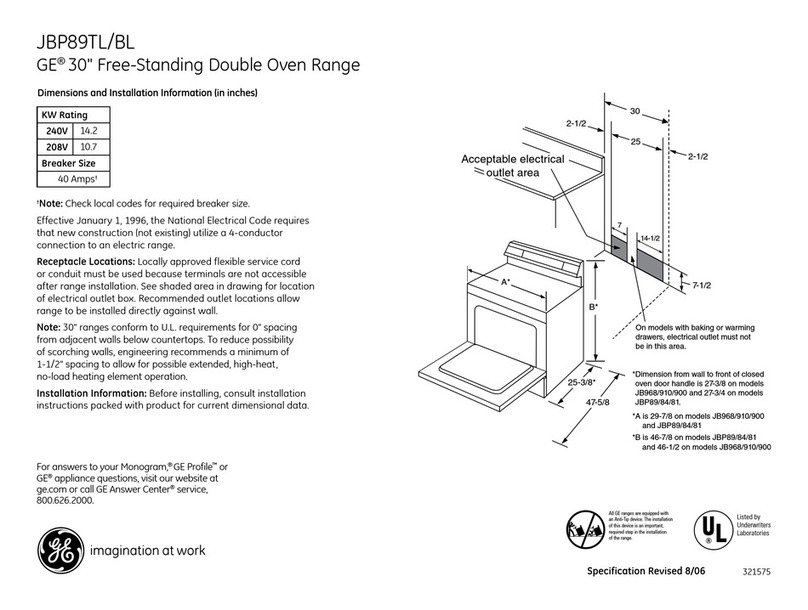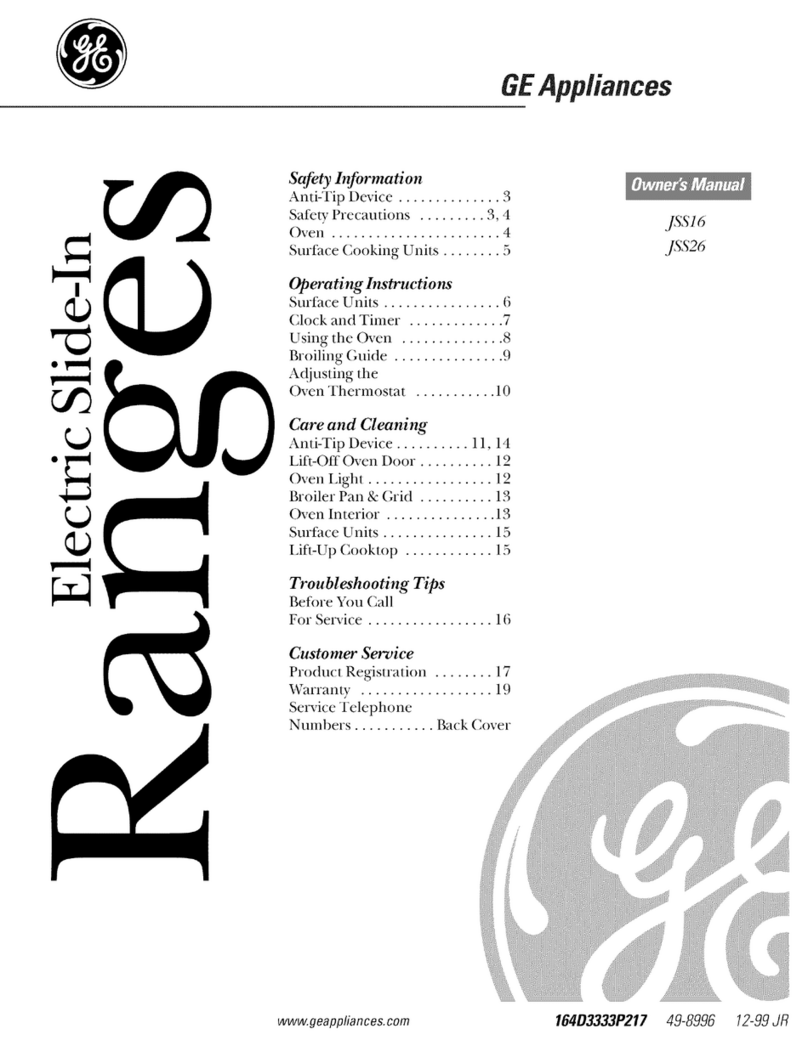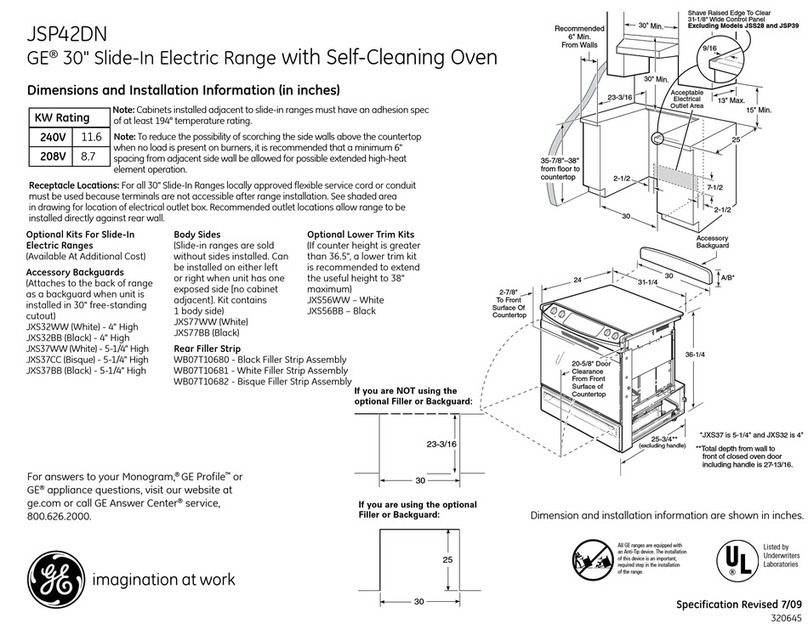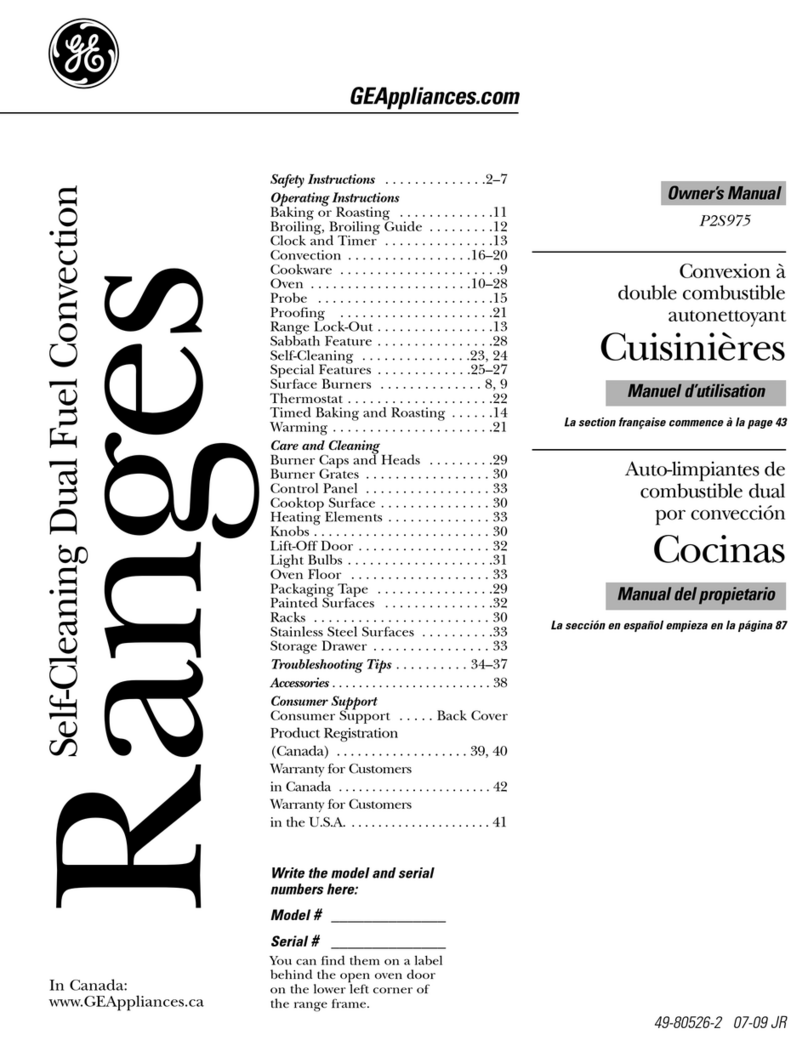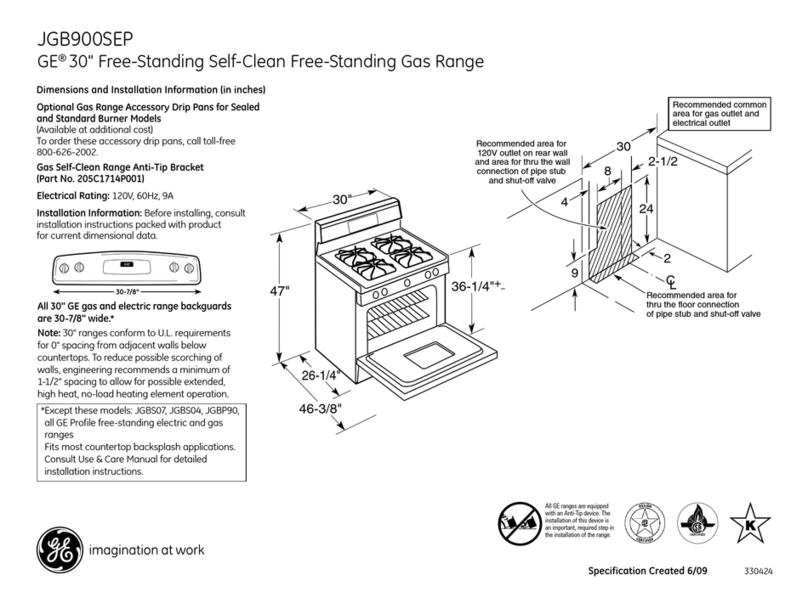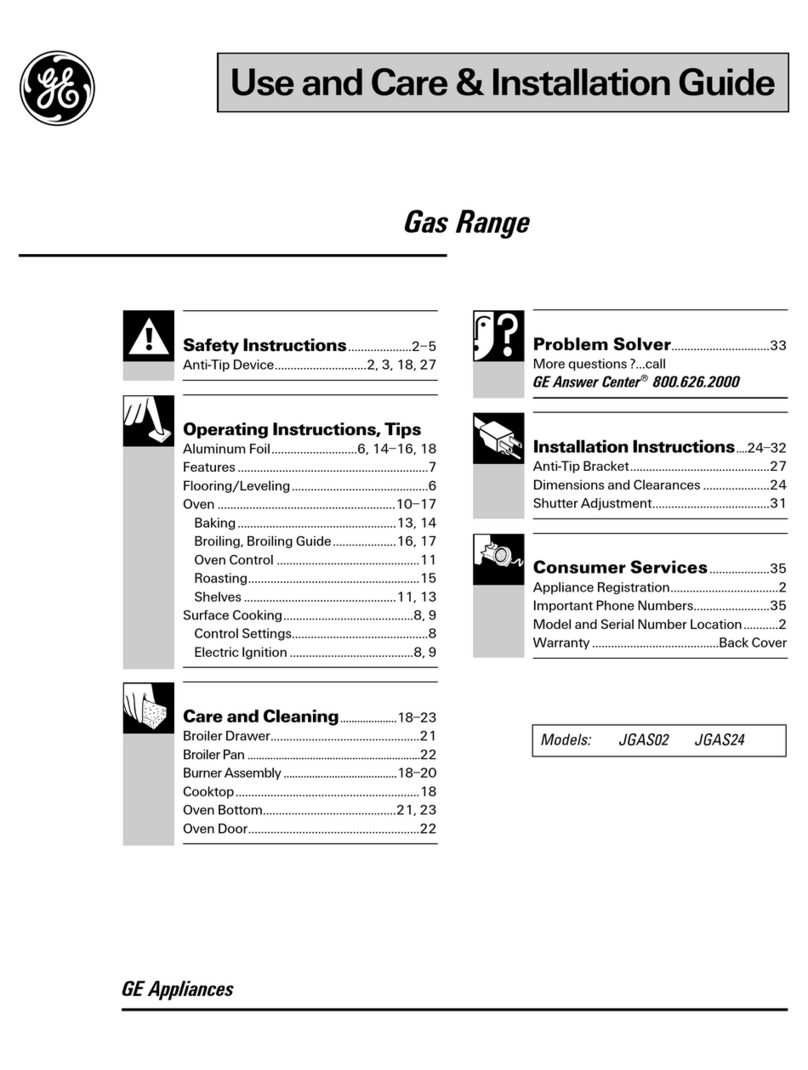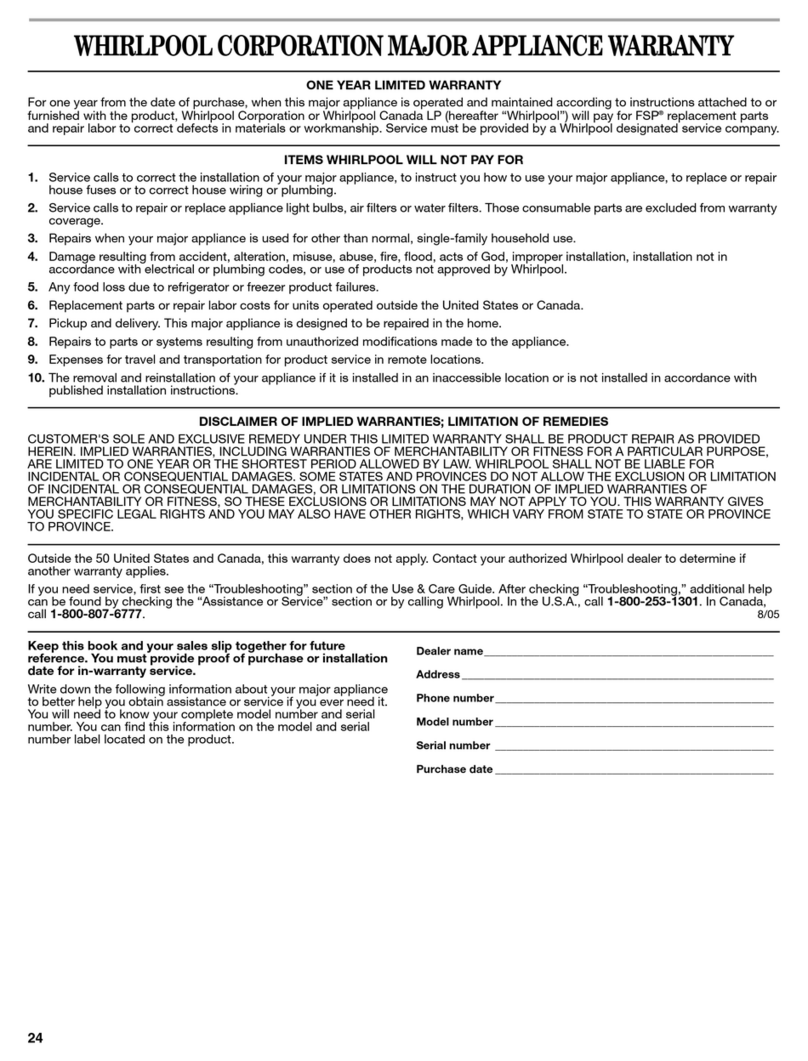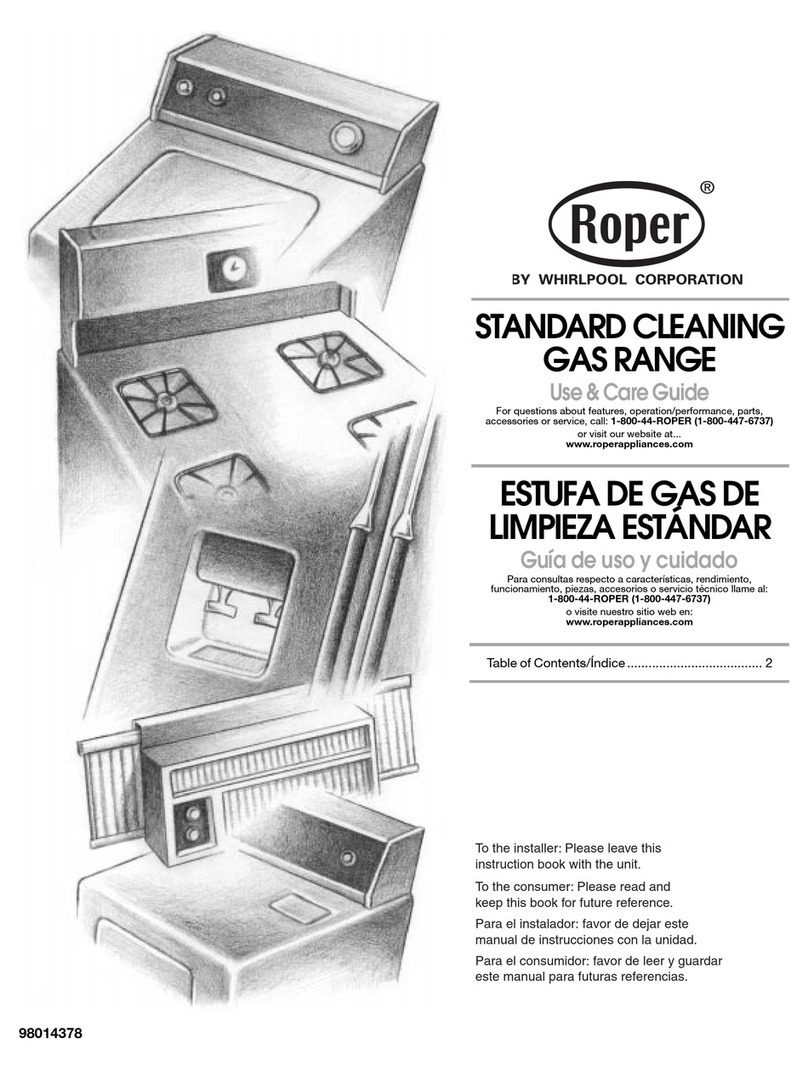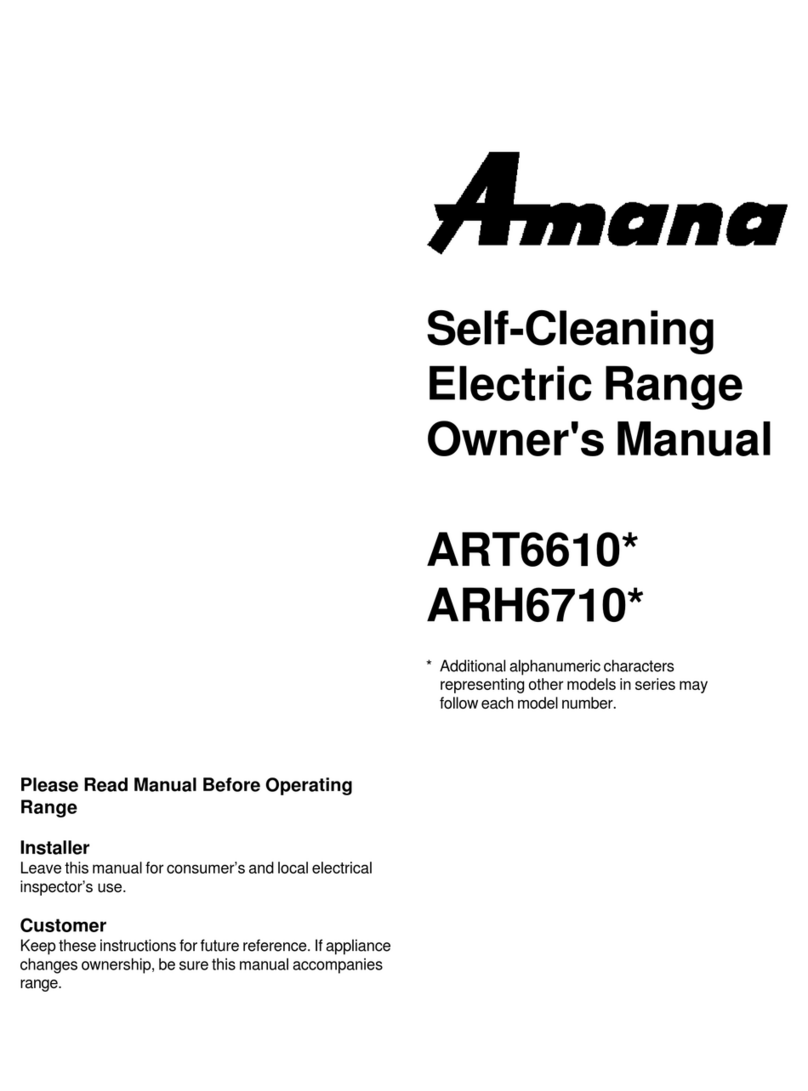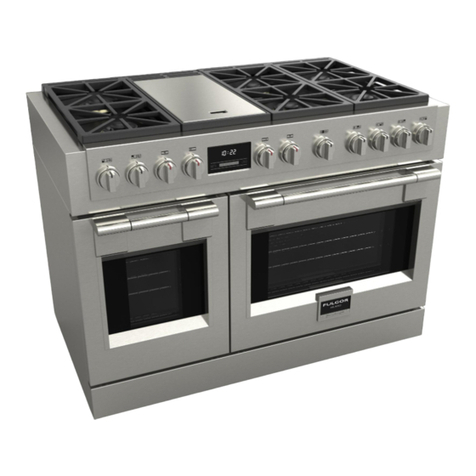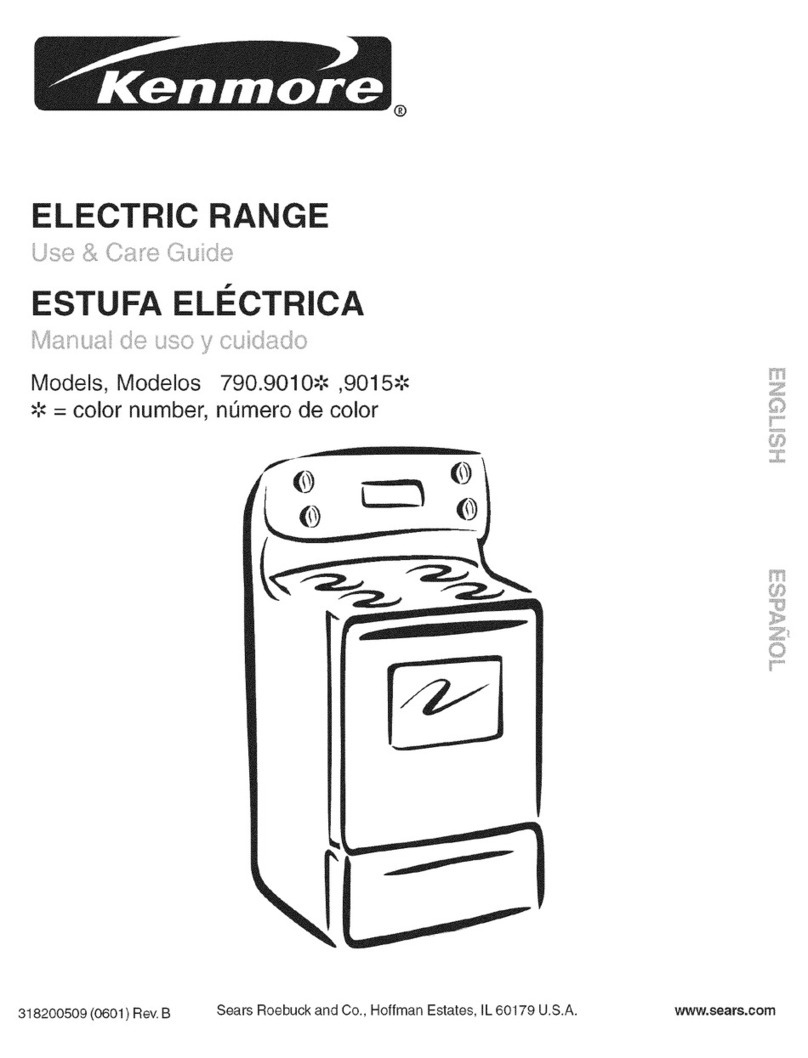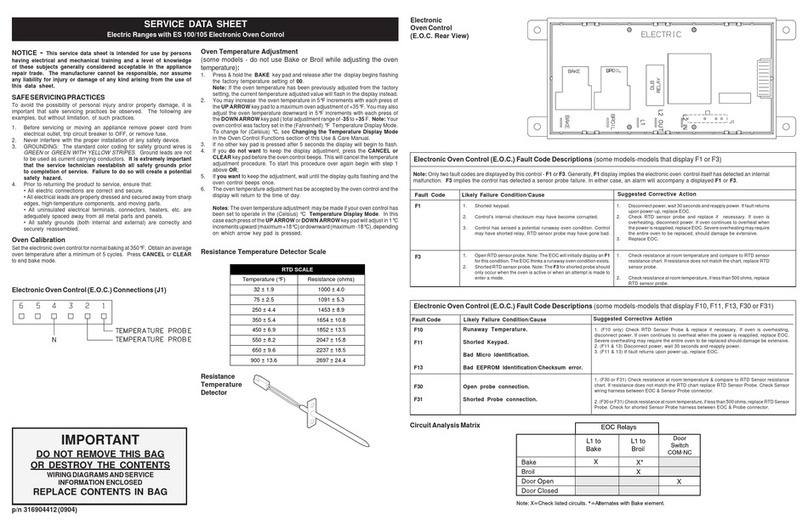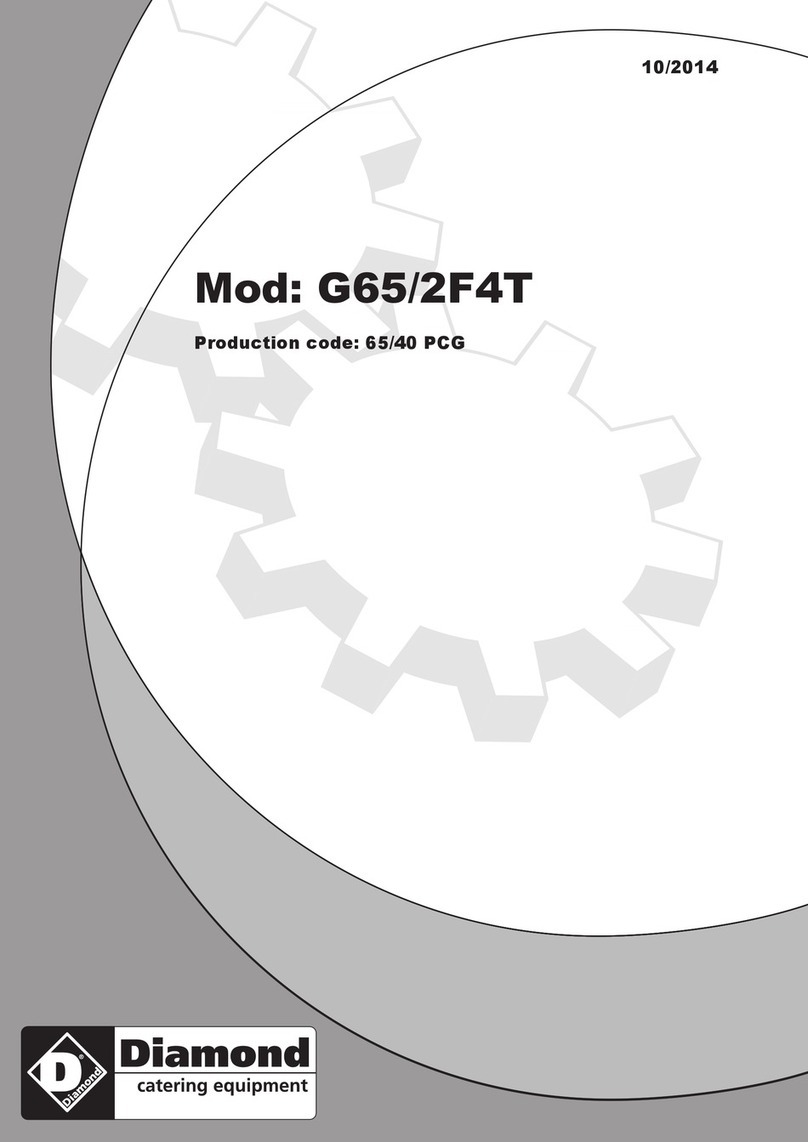Installation Instructions
WARNING!
INSTALLATION SAFETY
INSTRUCTIONS
Read these instructions completely and carefully.
Improper installation, adjustment, alteration, service
or maintenance can cause injury or property
damage. Refer to this manual. For assistance or
additional information, consult a qualified installer,
service agency, manufacturer (dealer) or the gas
supplier.
Never reuse old flexible connectors. The use
of old flexible connectors can cause gas leaks and
personal injury. Always use NEW flexible connectors
when installing a gas appliance.
IMPORTANT – Remove all packing material
and literature from oven before connecting gas and
electrical supply to range.
CAUTION – Do not attempt to operate the
oven of this range during a power failure (Electric
Ignition models only).
■Have your range installed by a qualified installer.
■Your range must be electrically grounded in
accordance with local codes or, in the absence
of local codes, in accordance with the National
Electrical Code (ANSI/NFPA 70, latest edition).
In Canada, electrical grounding must be in
accordance with the current CSA C22.1 Canadian
Electrical Code Part 1 and/or local codes. See
Electrical Connections in this section.
■efore installing your range on linoleum or any other
synthetic floor covering, make sure the floor covering
can withstand 180°F without shrinking, warping or
discoloring. Do not install the range over carpeting
unless a sheet of 1/4″thick plywood or similar
insulator is placed between the range and carpeting.
■Make sure the wall coverings around the range can
withstand heat generated by the range up to 200°F.
■Avoid placing cabinets above the range. To reduce
the hazard caused by reaching over the open flames
of operating burners, install a ventilation hood over
the range that projects forward at least 5″beyond
the front of the cabinets.
■The ventilating hood must be constructed
of sheet metal not less than 0.0122″thick.
Install above the cooktop with a clearance of not less
than 1/4″between the hood and the underside of the
combustible material or metal cabinet. The hood
must be at least as wide as the appliance and
centered over the appliance. Clearance between the
cooking surface and the ventilation hood surface
MUST NEVER BE LESS THAN 24 INCHES.
EXCEPTION: Installation of a listed microwave oven or
cooking appliance over the cooktop shall conform to
the installation instructions packed with that appliance.
■If cabinets are placed above the range,
allow a minimum clearance of 30″between the
cooking surface and the bottom of unprotected
cabinets.
■If a 30″clearance between cooking surface and
overhead combustible material or metal cabinets
cannot be maintained, protect the underside of the
cabinets above the cooktop with not less than 1/4″
insulating millboard covered with sheet metal not less
than 0.0122″thick. Clearance between the cooking
surface and protected cabinets MUST NEVER BE LESS
THAN 24 INCHES.
■The vertical distance from the plane of the cooking
surface to the bottom of adjacent overhead cabinets
extending closer than 1″to the plane of the range
sides must not be less than 18″. (See the Dimensions
and Clearances illustration in this section.)
■CAUTION – Items of interest to children
should not be stored in cabinets above a range or on
the backsplash of a range—children climbing on the
range to reach items could be seriously injured.
43
